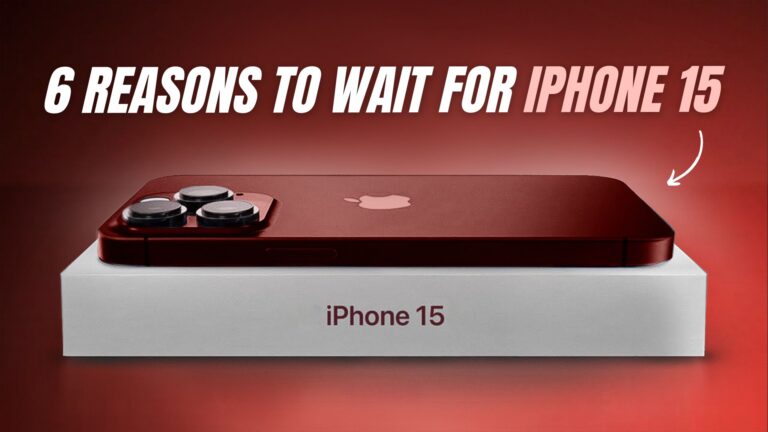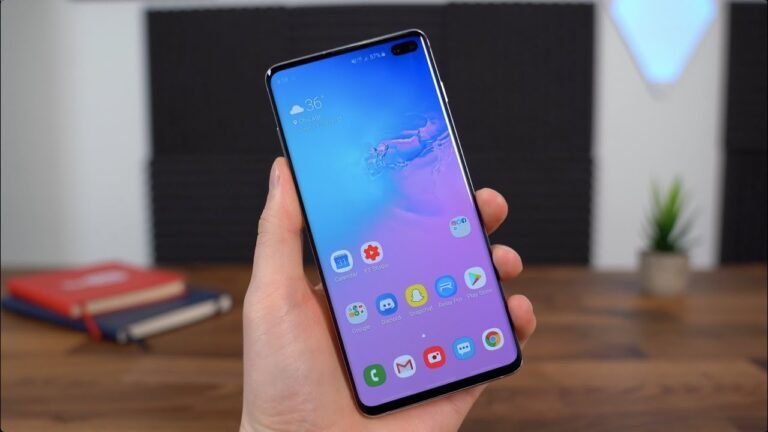Should you upgrade from the iPhone 14 Pro to the 15 Pro? Today, I’ll detail all the changes, highlighting both the positive and negative aspects, as well as the disappointments. I believe you’ll find my conclusion quite unexpected.
Specs Differences
| iPhone 14 Pro | iPhone 15 Pro | |
|---|---|---|
| Display | 6.1-inch OLED with 120Hz (460 ppi) | 6.1-inch OLED with 120Hz (460 ppi) |
| Weight | 206g | 187g |
| Processor | A16 Bionic chip | A17 Pro chip |
| RAM/Storage | 6GB with 128GB/256GB/512GB/1TB | 8GB with 128GB/256GB/512GB/1TB |
| Battery | 3,200mAh with 20W charging | 3,650mAh with 20W charging |
| Camera | 48MP main, 12MP ultrawide, 12MP telephoto, 12MP front | 48MP main, 12MP ultrawide, 12MP telephoto (2x), 12MP telephoto (3x), 12MP front |
| Connectivity | 5G (sub-6 GHz and mmWave) | 5G (sub-6 GHz and mmWave) |
| Price | Starting at $799 | Starting at $999 |
Design Differences
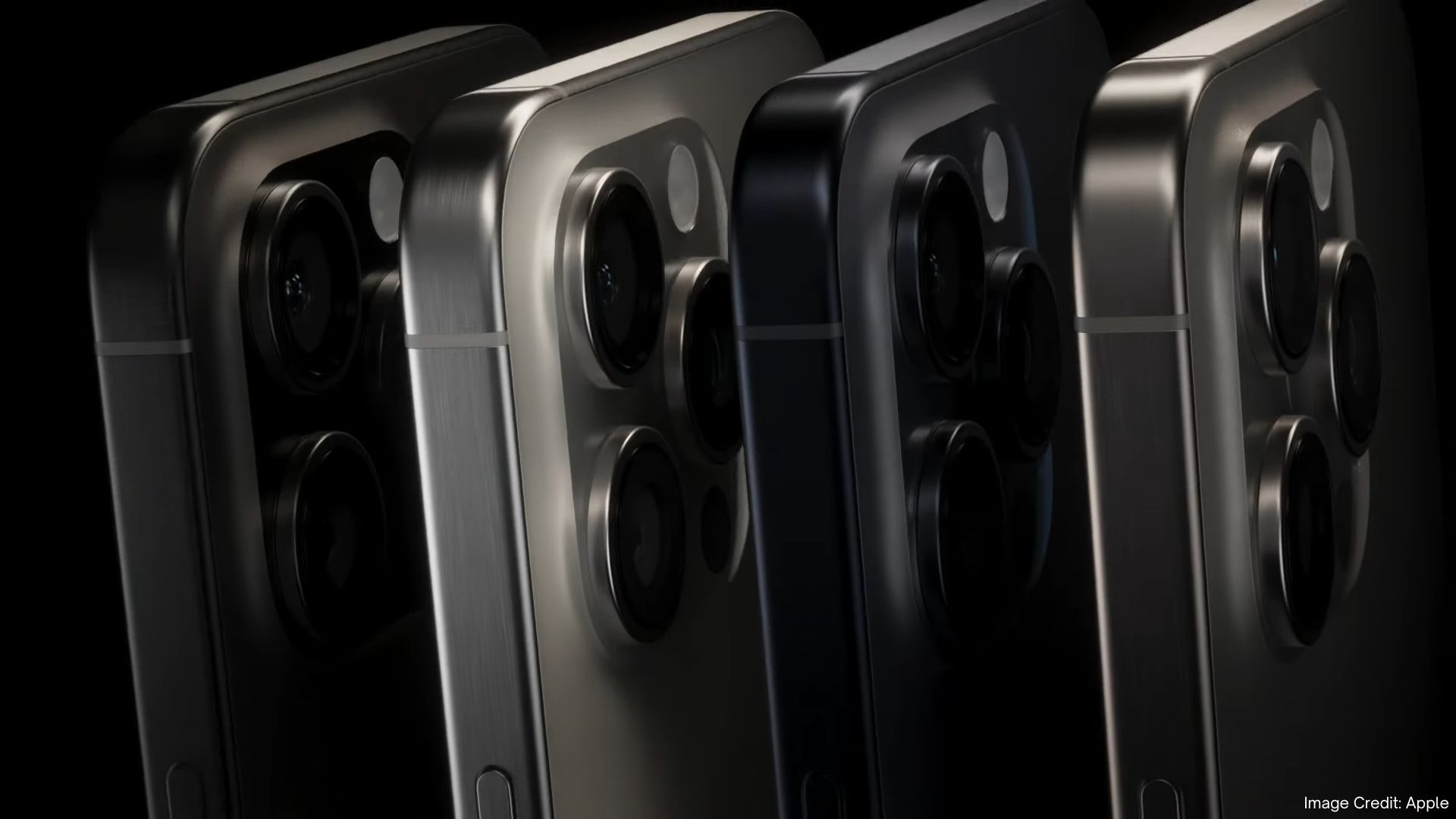
Apple really focused on the design, the new materials, the chip, and the cameras. Starting with the titanium build, this is the first time Apple is switching away from the stainless steel that I have really liked but was quite heavy.
Titanium has the highest strength to weight ratio. It is a new brushed look instead of the shiny stainless steel, and I think it looks fantastic. They also thinned down the bezels, allowing them to make the actual size of the phone smaller, so it’s going to fit more comfortably in your hand.
Along with that, it has a new contoured edge which makes it more comfortable as well. So, you have the flat sides for a really good grip, but you also get added comfort. With this titanium design, it is the lightest Pro iPhone ever.
Unfortunately, the color options are a bit boring and very similar. Instead of the deep purple and space black, along with the silver and the gold that I personally love, we have black titanium, natural titanium, blue titanium, and white titanium. A few of them have the same color on the sides, and just the backs are different.
Apple said that it takes 14 hours to complete the process to make these titanium frames. They have a new solid-state diffusion to connect the titanium to the aluminum to help with heat. It’s also more repairable because of the new design, and that’s definitely a great thing.
Action Button vs Silent Switch
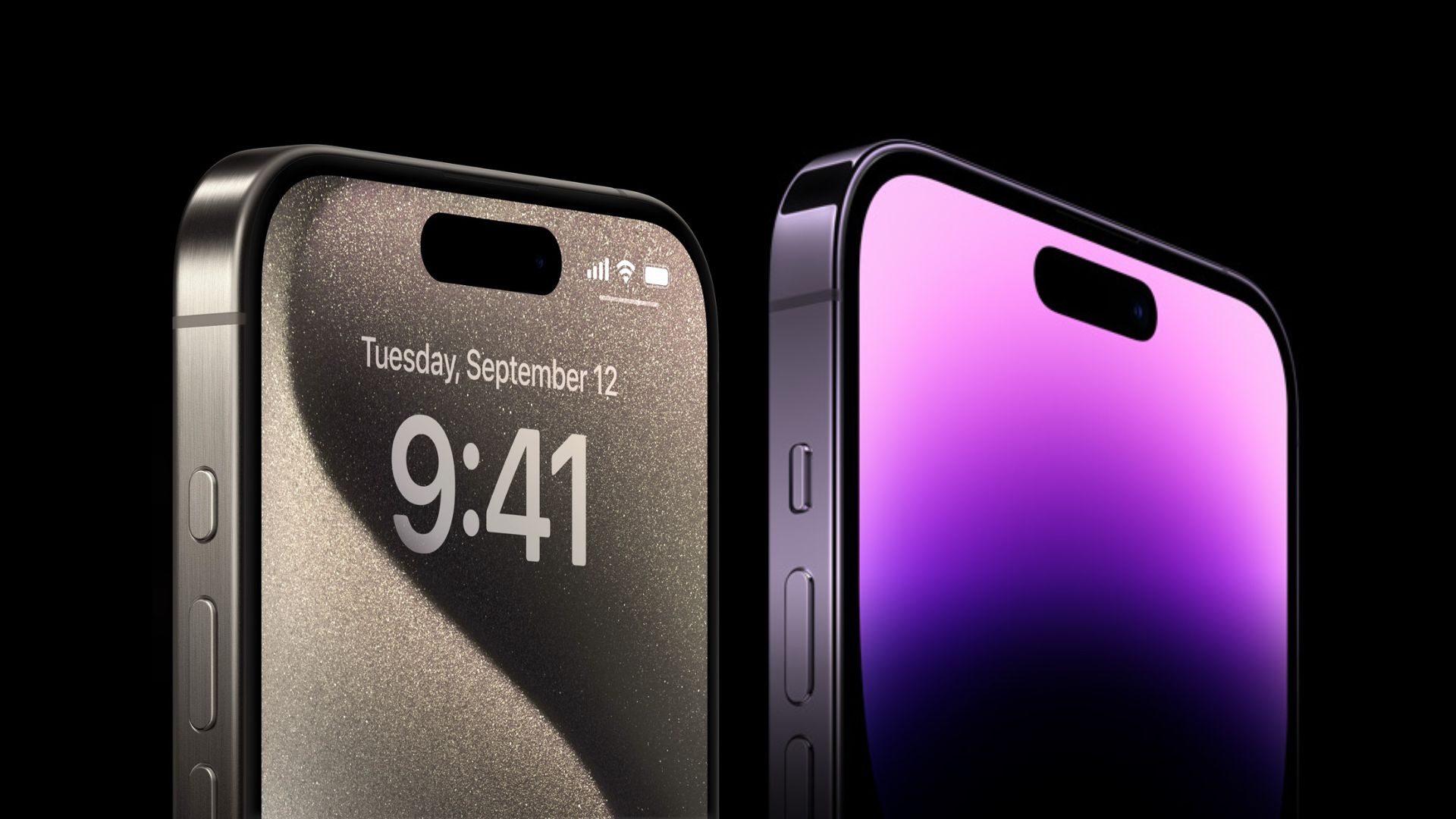
The next reason to upgrade is the new action button. The physical silent switch that we all loved is now gone. By default, you can still switch to silent mode by holding it down. However, this button is customizable. You can set it to trigger audio recording, or, my personal favorite, to quickly launch the camera. This is going to be incredibly handy. There are several other actions available, and they’re not limited. You can even use shortcuts to create your own action button function. While I don’t believe anyone will upgrade solely for this action button, it’s a feature no one will complain about.
Apple A17 Pro vs A16 Bionic
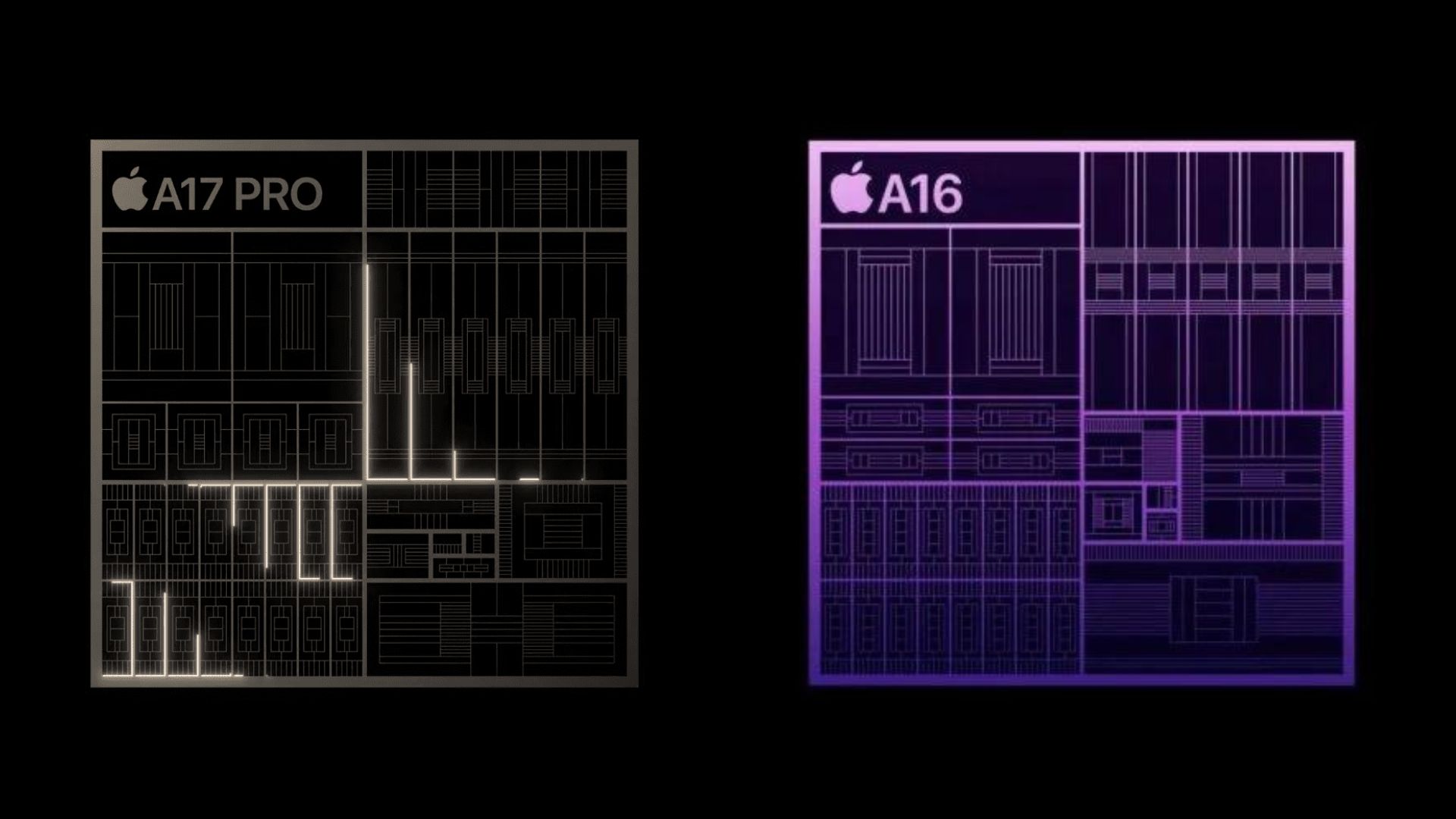
Now, let’s cover the brand new A17 Pro chip, the first A-series chip with that Pro branding. Is it really Pro and a big upgrade. We’ve been excited for this chip for a very long time because this marks Apple moving to 3 nanometers, the first time in any device.
While many expected substantial improvements in CPU, graphics, and battery life performance, the results have been surprising. The A17 Pro retains the same core configuration as the A16 Bionic, with 2 performance cores and 4 efficiency cores. The transistor count has been increased from 16 billion in the A16 to 19 billion in the A17 Pro, signaling a decent leap. However, Apple has indicated that the chip is only about 10% faster than its predecessor. It’s worth noting that previous chip upgrades had a much bigger difference in performance.
Apple really focused on the efficiency cores, saying that they have 3x better performance per watt compared to the competition. However, this was a similar selling point for the A16 when it was released.
In terms of graphics, the A17 Pro features a six-core GPU, an upgrade from the A16’s five-core. Apple claims this results in a 20% speed increase. Once again, that’s not that big of a boost. This isn’t as significant as the 40% jumps we’ve seen in the past. This fell short of our expectations.
A notable addition is the introduction of hardware ray tracing, which gives it 4x the performance compared to software. This enhancement should allow for higher quality gaming experiences. Demonstrations from Apple have showcased gameplay capabilities that were previously unachievable, all with improved graphics and potentially lower power consumption.
What Apple really focused on is the new neural engine. Even for gaming, they have a new metal effects upscaling that uses less power. This aims to enhance graphic quality without demanding excessive GPU performance. The neural engine itself boasts a speed that’s twice as fast as the one in the A16, found in the iPhone 14 Pro. It has 35 trillion operations per second and dedicated engines. This is what Apple is using to enable some of the new cool features and to increase the performance.
The iPhone 15 Pro has 8GB of RAM compared to 6GB in 14 Pro. This will increase how many things can stay open in the background without having to automatically shut off.
With this new chip, we now achieve USB 3 speeds with the controller for the new USB type-C port. We were anticipating Thunderbolt integration, but that didn’t materialize. We’re getting 10 gigabits per second instead of the expected 40. This means it’s 20 times faster than the iPhone 14 Pro if you utilize the connector for transfers. However, if you don’t use this feature, it won’t make a difference to you.
Additionally, the new cable available for purchase at $19 supports 60-watt charging. Not that the iPhone can handle that much power, but it offers only USB 2.0 speed. So, to take full advantage of the faster transfers, you’ll need to invest in a different cable.
In summary, I believe the new A17 Pro doesn’t deserve the “Pro” label. This seems to be one of the less impressive upgrades in terms of the specs being offered.
Camera Upgrades
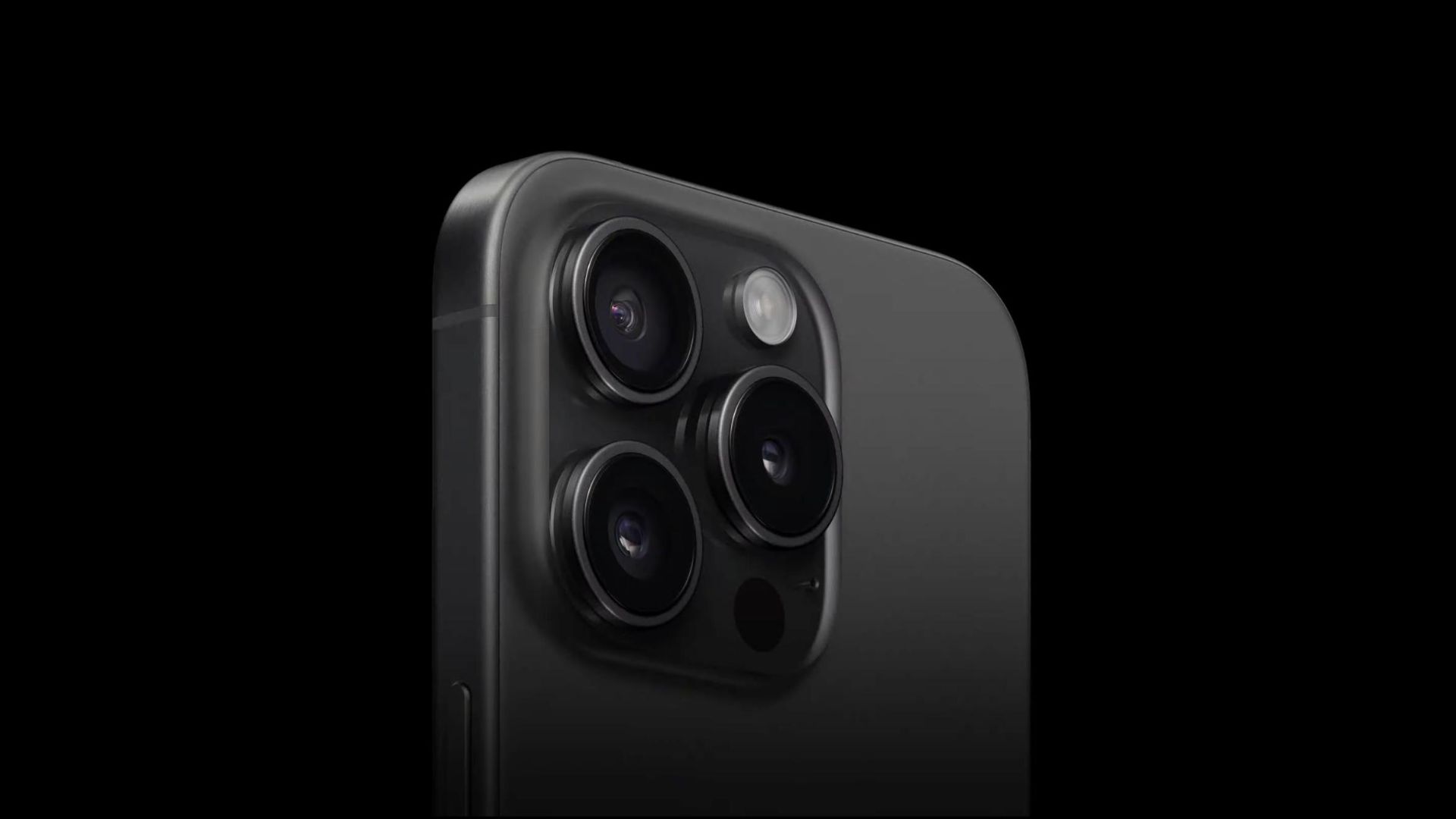
Let’s delve into the camera specifications, where things take an unusual turn. The main camera sensor, which Apple highlighted as superior to that of the standard iPhone 15s, is identical to the sensor found on the iPhone 14 Pro and Pro Max. However, the software enhancements are noteworthy. We now have Smart HDR5 for improved HDR. At last, a feature I’ve long desired: the ability to capture 48-megapixel images and save them at their full resolution. It seems that by default, users will be able to save images as 24-megapixel files, an improvement from the 12-megapixel default on the 14 Pro. Additionally, there’s an option to adjust this to 48 megapixels without the need to shoot in ProRAW, which typically consumes a significant amount of storage. This enhancement is genuinely commendable. However, it’s feasible that such a feature could be introduced to the iPhone 14 Pro and Pro Max via a software update. I’m skeptical that Apple will take this route, though, as they might want to keep this feature exclusive to the new iPhone 15 Pro models.
Apple made a big deal about having all sorts of different cameras packed into it. But a lot of that is just using more crop. With the iPhone 14 Pros, Apple introduced a 2X crop mode, which I genuinely appreciated. Now, by tapping the 1X, you can access 1.2X and then 1.5X. These settings equate to roughly 28mm and 35mm equivalents, and then it jumps to about 50mm for the 2X mode. All of this is possible on the iPhone 14 pro. All these functionalities are feasible on the iPhone 14 Pro. When examining the iPhone 15 Pro, its telephoto camera is not only identical to the iPhone 14 Pro’s but also mirrors the one in the 13 Pro. This means Apple is relying on the same camera for the third consecutive year, merely updating the software. The story is similar for the ultra-wide camera; it retains the exact lens used in the previous model. So, when it comes to the actual camera hardware of the iPhone 15 Pro, it’s virtually indistinguishable from the 14 Pro.
Unfortunately, we also don’t have 8K video recording, which they could have done, but they chose not to. They did give us a couple of updates. You can shoot cinematic mode with 4K 60FPS, so that is great. A lot more software features, but nothing extremely groundbreaking. I think the coolest update, which once again is software, is being able to take a photo and add portrait mode later or switch where that portrait mode is actually focusing on.
We have a few other changes that might not matter to most people, but they could be very cool. If you’re planning to buy a Vision Pro, you’ll be able to record sideways, like what was shown with the iPhone. It will use dual lenses to achieve that 3D depth in vision video. That feature will be mandatory if you decide to get one. In addition, you’ll be able to record to external devices or storage. This is especially useful if you’re shooting in ProRes, which takes up a lot of space. It’s convenient to be able to disconnect that, plug it into your computer, and start editing immediately. Alongside this, there will be log recording. So, if you’re not a fan of the super HDR look, you can have all that control for yourself. For professionals recording video, these are significant changes that make upgrading a compelling option.
Pricing & Storage
| iPhone 14 Pro | iPhone 15 Pro | |
| US | USD 999 | USD 999 |
| UK | GBP 1099 | GBP 999 |
| China | RMB 7,999 | RMB 7,999 |
| Japan | JPY 149,800 | JPY 159,800 |
| Germany | EUR 1299 | EUR 1,199 |
| India | INR 129,900 | INR 134,900 |
Now, as for prices, this is where everybody expected a jump of $100 to $200. The cool thing is the iPhone 15 Pro, the smaller size, is still at $999. It still comes with the same 128GB of storage. The 15 Pro Max now actually costs a hundred dollars more, but it starts off at 256 gigabytes of storage. Which means it’s actually the same exact price as what I got with my iPhone 14 Pro Max 256GB model. So technically, it didn’t get more expensive. They’re just forcing you to get that upgrade.
iPhone 15 Pro vs iPhone 14 Pro: Is it worth the upgrade?
| iPhone 14 Pro | iPhone 15 Pro |
| Cheaper Option | New Action Button |
| Fan of Gold iPhones | Type-C Port |
| Still Loving Lightning Port | Better Performance |
If design refinements, the action button, and camera software enhancements strongly appeal to you, then the iPhone 15 Pro could be a worthy investment. However, if you are content with the iPhone 14 Pro’s performance and camera capabilities, and the mentioned upgrades don’t seem crucial, it might be wise to wait for future iterations where more substantial advancements might be offered.
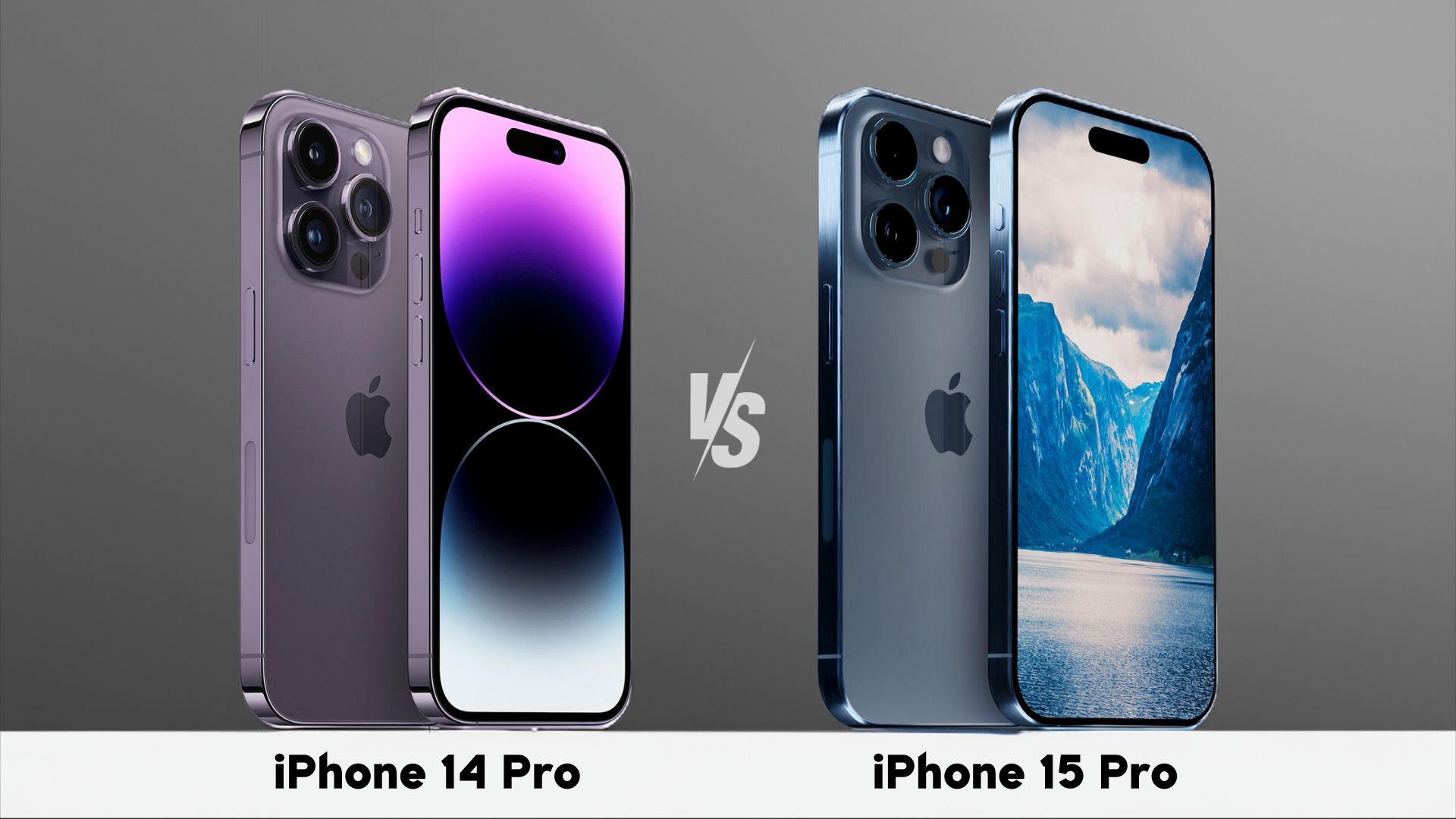
![iPhone 14 vs iPhone 13 vs iPhone 12 [Updated Guide]](https://www.theworldsbestandworst.com/wp-content/uploads/2022/11/iPhone-14-vs-iPhone-13-vs-iPhone-12-768x432.jpg)
